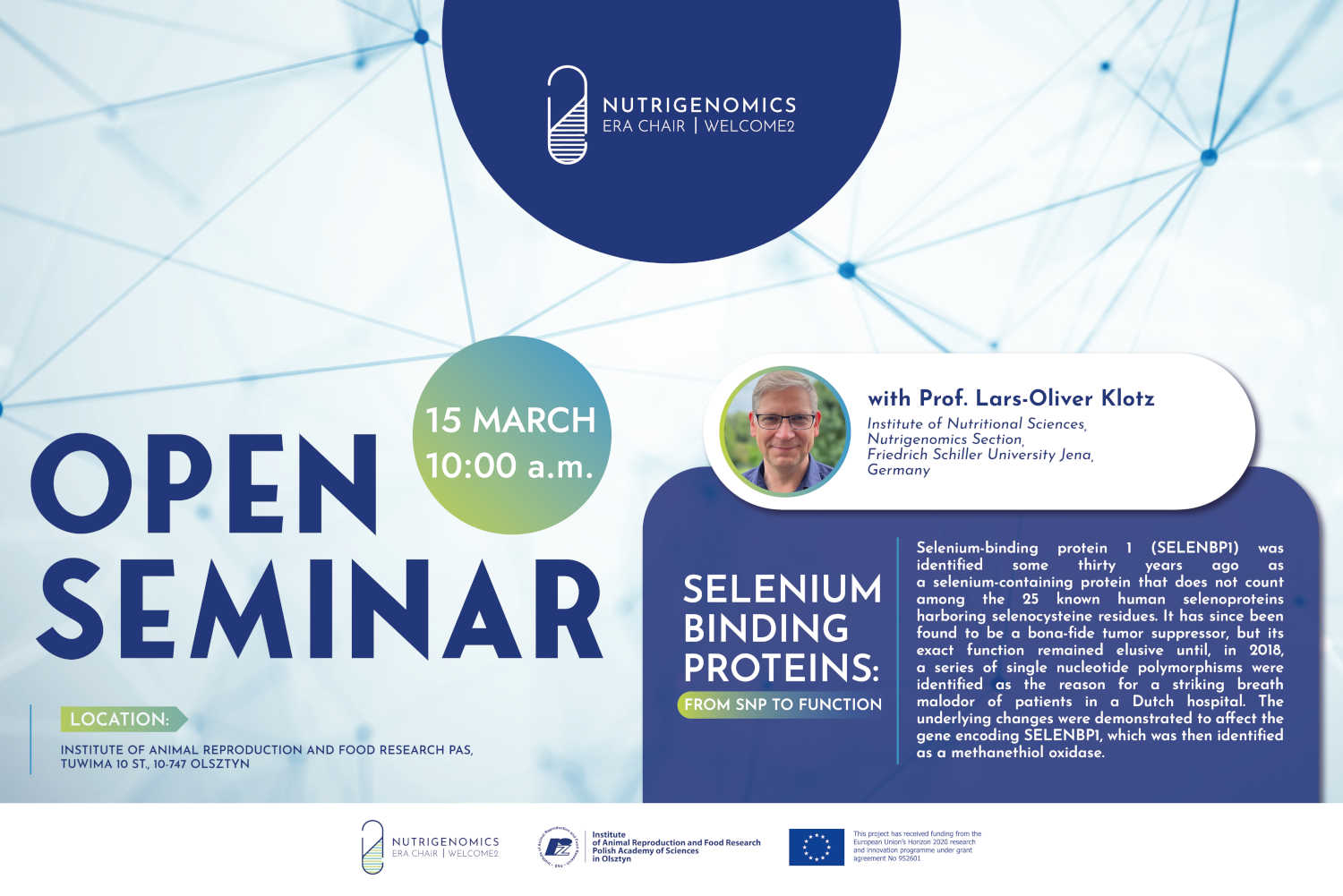
15 marca br. o godzinie 10:00 w Instytucie Rozrodu Zwierząt i Badań Żywności PAN odbędzie się pierwsze międzynarodowe seminarium naukowe w ramach projektu ERA Chair Welcoming ERA Chair to Centre of Excellence in Nutrigenomics to optimise health and well-being. Serię seminariów zainauguruje Lars-Oliver Klotz, profesor nutrigenomiki w Instytucie Nauk o Żywieniu Uniwersytetu Friedricha Schillera w Jenie (Niemcy). Prof. Klotz prowadzi badania z zakresu biochemii i biologii molekularnej, toksykologii molekularnej i biologii komórki. Podczas seminarium w Olsztynie wygłosi referat: „Selenium-binding proteins: from SNP to function”.
Seminarium i spotkanie z udziałem prof. Klotza odbędą się w Oddziale Nauk o Żywności Instytutu Rozrodu Zwierząt i Badań Żywności PAN przyl. ul. Tuwima 10.
Prof. Lars-Oliver Klotz – BIO
Lars-Oliver Klotz (LOK) is Professor of Nutrigenomics at the Institute of Nutritional Sciences, Friedrich Schiller University, Jena, Germany. He is Dean of the Faculty of Biological Sciences at Friedrich Schiller University. He obtained his Diploma degree (an MSc equivalent) in biochemistry from the University of Tübingen, Germany, followed by a Ph.D. in biochemistry from the University of Düsseldorf, Germany (1998; advisor: Helmut Sies). Following postdoctoral research at the National Institute on Aging in Baltimore, MD, USA, he obtained his lecturer’s qualification (Habilitation degree) at the University of Düsseldorf. In 2010, he moved to the University of Alberta, Edmonton, AB, Canada, where he was an Associate Professor (tenured) and held the Canada Research Chair in Pharmaceutical Sciences at the Faculty of Pharmacy and Pharmaceutical Sciences. In 2013, Dr. Klotz assumed his current position. Dr. Klotz is the 2006 recipient of SFRR-Europe’s Catherine-Pasquier-Award. His research interests include the biochemistry of oxidative stress, stress-induced signal transduction and molecular processes in aging.
Selenium-binding proteins: from SNP to function
Abstract:
Selenium-binding protein 1 (SELENBP1) was identified some thirty years ago as a selenium-containing protein that does not count among the 25 known human selenoproteins harboring selenocysteine residues. It has since been found to be a bona-fide tumor suppressor, but its exact function remained elusive until, in 2018, a series of single nucleotide polymorphisms were identified as the reason for a striking breath malodor of patients in a Dutch hospital. The underlying changes were demonstrated to affect the gene encoding SELENBP1, which was then identified as a methanethiol oxidase.
This presentation will summarize the work on SELENBP1 performed in the Klotz lab regarding the enzymatic activity of SELENBP1, the role of selenium, the role of transition metal ions and the search for a function of this protein, using isolated SELENBP1 mutants, cell culture models and a model organism, Caenorhabditis elegans.

